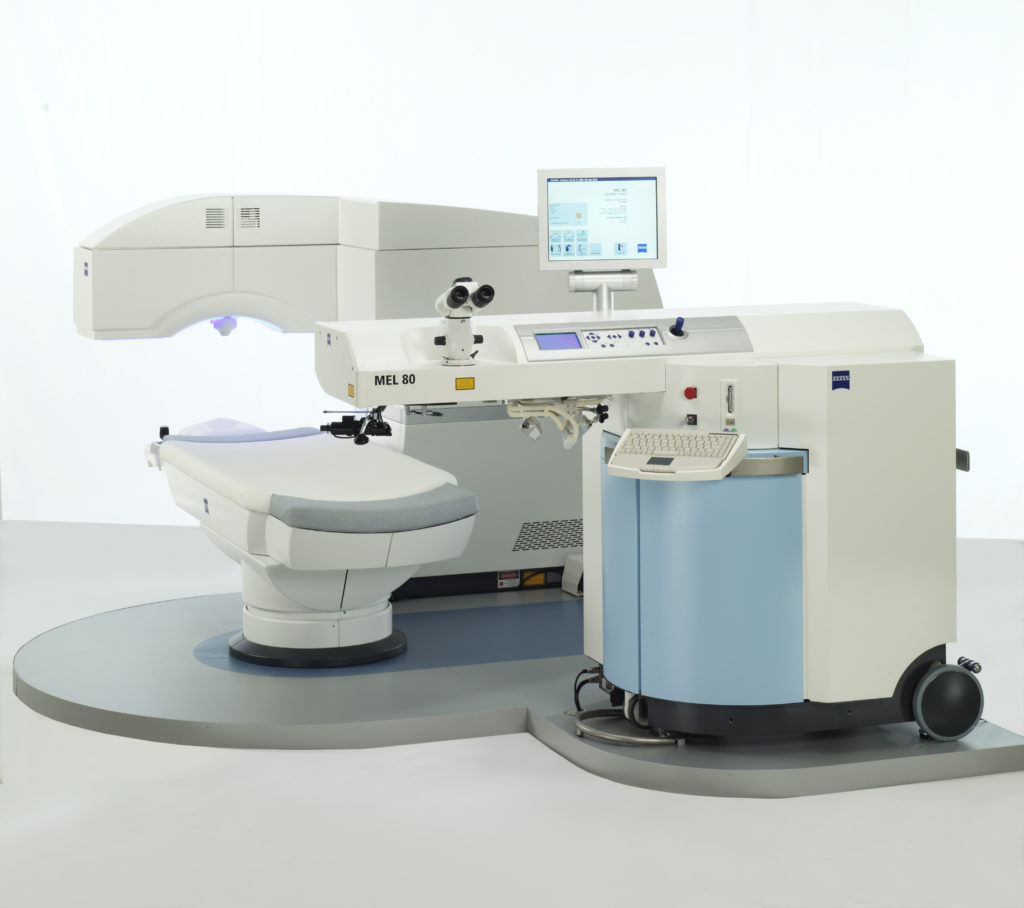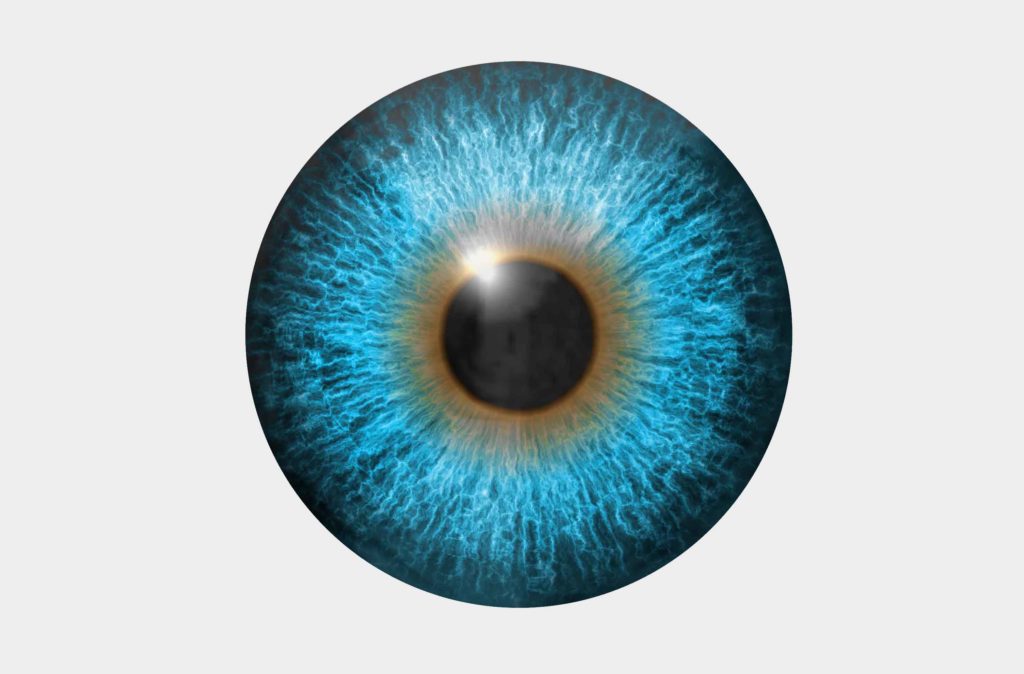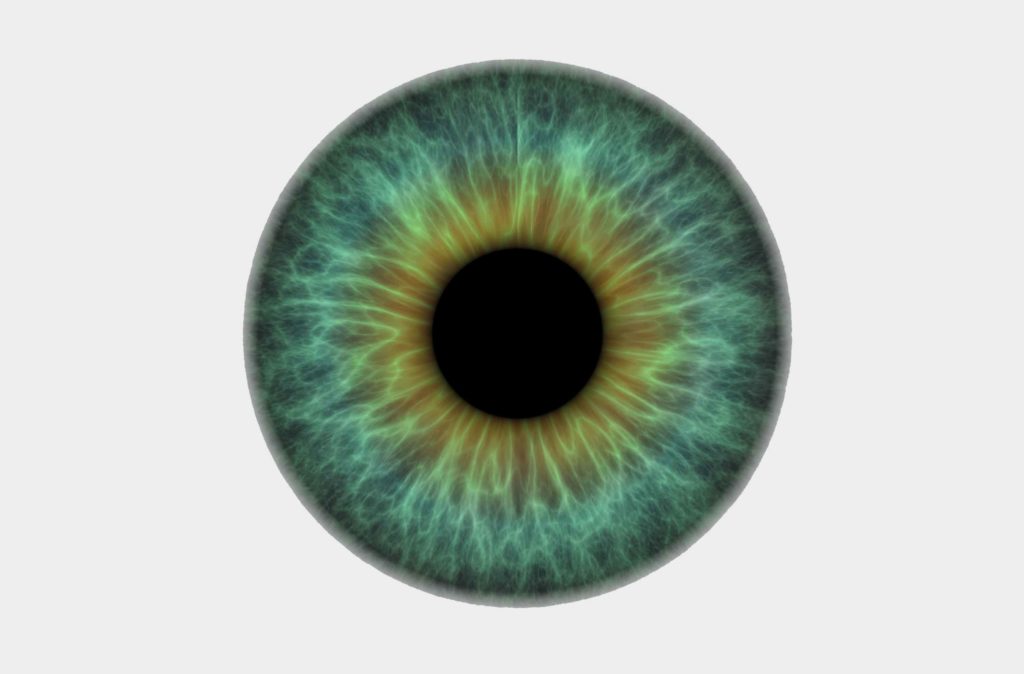
Flapless laser for myopia
Femtosecond lenticule extraction SMILE
(Small incision lenticule extraction)
Actual laser treatment in this method is performed exclusively with the “Visumax”laser which prepares a lenticule (a corneal disc). A minimal access point of about 3 mm is then created likewise with the femtosecond laser, through which the surgeon loosens and removes the disc. The innovative SMILE method was developed by Zeiss and is the first minimally invasive intrastromal laser procedure worldwide for the treatment of myopia and astigmatism.
Side effects of this procedure such as dry eye and foreign body sensation are only minimal since correction is performed through an intact cornea. Opening up of the cornea is no longer necessary in contrast to LASIK or Femto-LASIK. This method does not lead to “incorrectly cut” flaps.
Femtosecond lenticule extraction: the treatment process
- The eye is anaesthetised with local eye drops.
- A lid holder is used to keep the eye open.
- A small curved glass (contact glass) is placed on the eye, thereby fixing it.
- Laser treatment is undertaken through the glass surface: a lenticular corneal disc (lenticule) is prepared under the corneal surface with the femtosecond laser. The cornea is then perforated with tiny air bubbles using the laser. The prepared corneal disc is pulled out at the corneal edge through a small, straight laser cut.
Prerequisites for femtosecond lenticule extraction SMILE
- Adequately thick patient cornea
- No chronic progressive corneal disease (e.g. keratoconus)
- Any pre-existent refractive error must be stable
- No eye diseases such as glaucoma or cataract
- No generalised diseases such as wound-healing disorders, autoimmune disease, collagenoses
- No pregnancy
- Minimum age 18 years
Superiority of femtosecond lenticule extraction SMILE over other laser treatments
- The procedure does not give rise to incorrectly cut flaps
- No opening of the cornea (flap)
- Preparation of a lenticule within an intact cornea
- Only a small wound is produced on the corneal surface
- Minimally-invasive procedure of a few millimetres
- Operations may be performed even with critical corneal thickness due to the highly precise computer-guided laser procedure.
- Nearly completely preserved corneal surface layer (epithelium)
- Mild or no pain
- No corneal scarring
- Short period of rehabilitation
- Practically unchanged corneal stability postoperatively
- Complete laser [sic] correction in just one treatment step
- No change of instruments during the procedure
- Corrections may be undertaken

VisuMax – the precise, latest-generation femtosecond laser
Minimal laser pulse energy, enabled by highly precise Zeiss optics and high pulse frequency achieve a hitherto unsurpassed perfection of tissue separation – and exactly at the desired corneal depth. Creation of the lenticule with the VisuMax is highly predictable. Femtosecond lenticule extraction SMILE may effectively rid even those patients of their spectacles or contact lenses in whom refractive error correction by laser was previously not possible due to a thin cornea or extremely defective vision.
Functioning of the femtosecond laser
The femtosecond laser is a solid-state laser, and functions in the near infrared range (1053 nm). The energy of the laser beam penetrates the outermost corneal layer to a predetermined and exactly calculated depth to the nearest thousandth of a millimetre. The laser’s energy (photodisruption) give rise to extremely fine air bubbles at the surface, the tissue is severed and a lenticular corneal disc of pre-determined depth and individualised shape is obtained. Tissue outside of the site of application remains unchanged.
Correction spectrum of femtosecond lenticule extraction SMILE
Depending on the thickness of the cornea, Femto-Lasik permits the durable correction of visual defects of +4 diopters in case of hyperopia and of ca. –8 diopters in case of myopia, in combination with an astigmatism of up to 5 diopters.
Information evening
We organize regular information sessions on the most modern technologies and safest procedures for the correction of visual defects.
Free short test
As a free service we offer in our eye centers in Berne and Fribourg nonbinding free short tests. Book one now!



